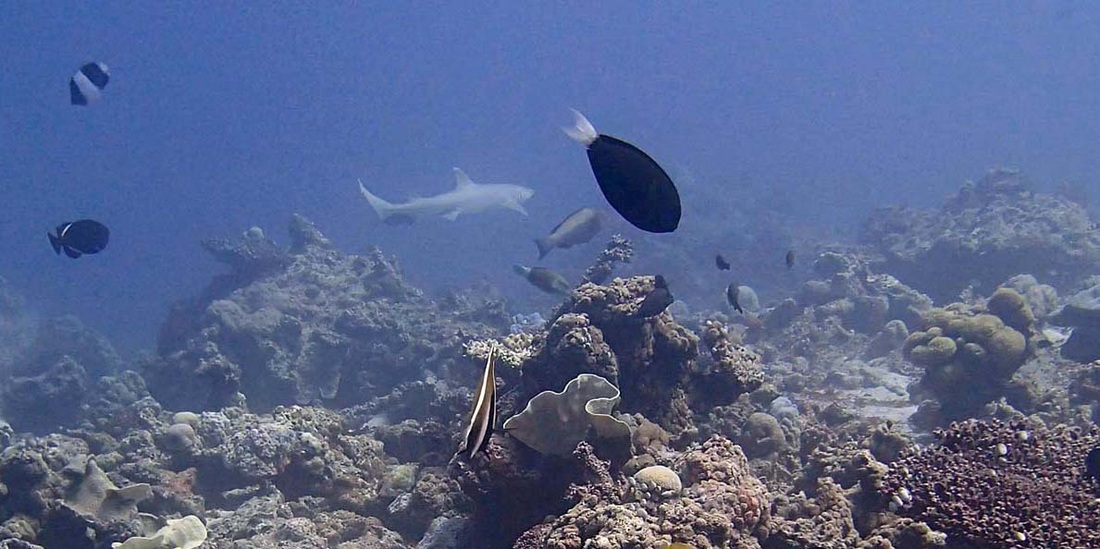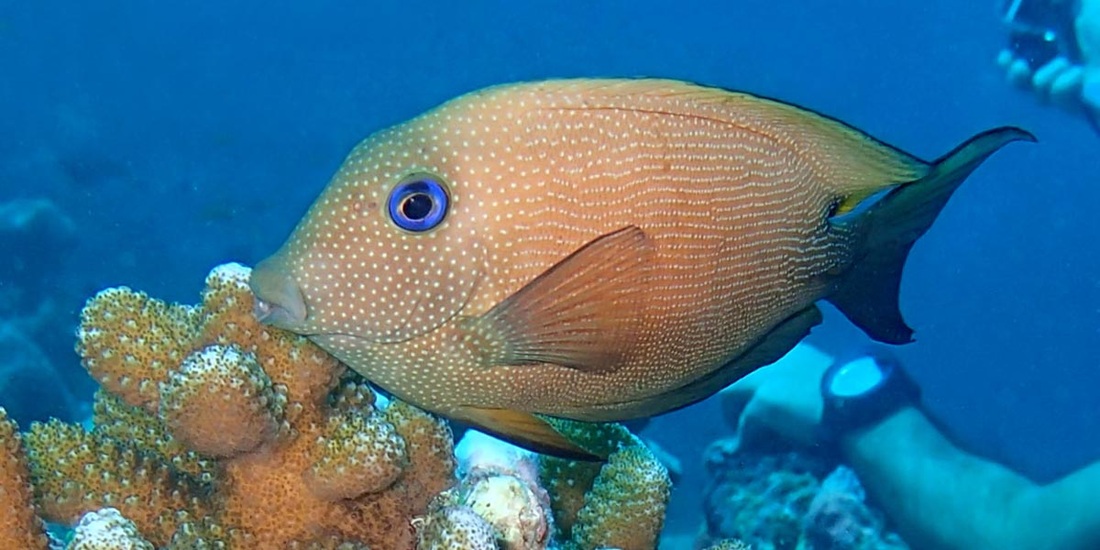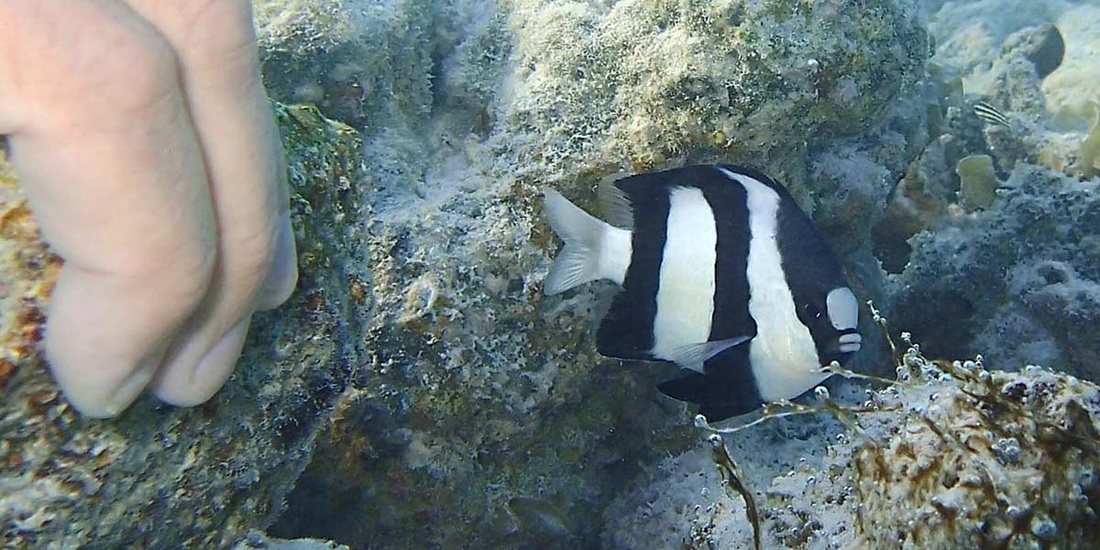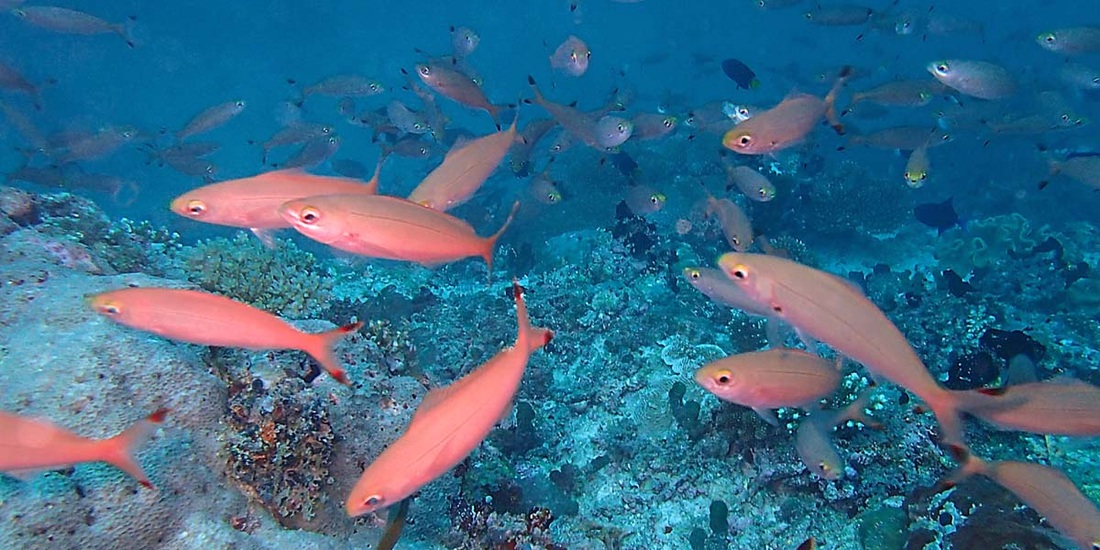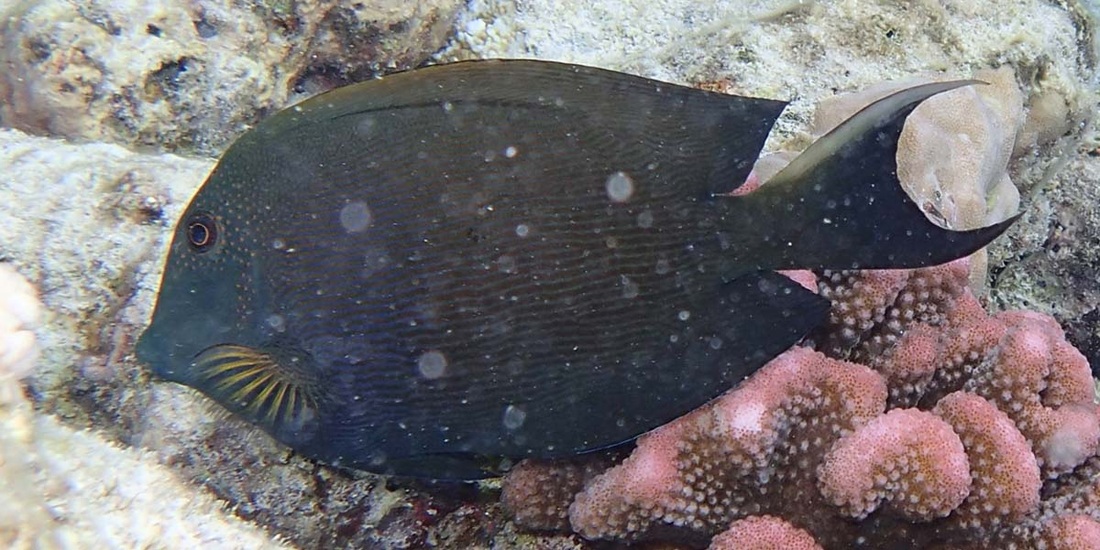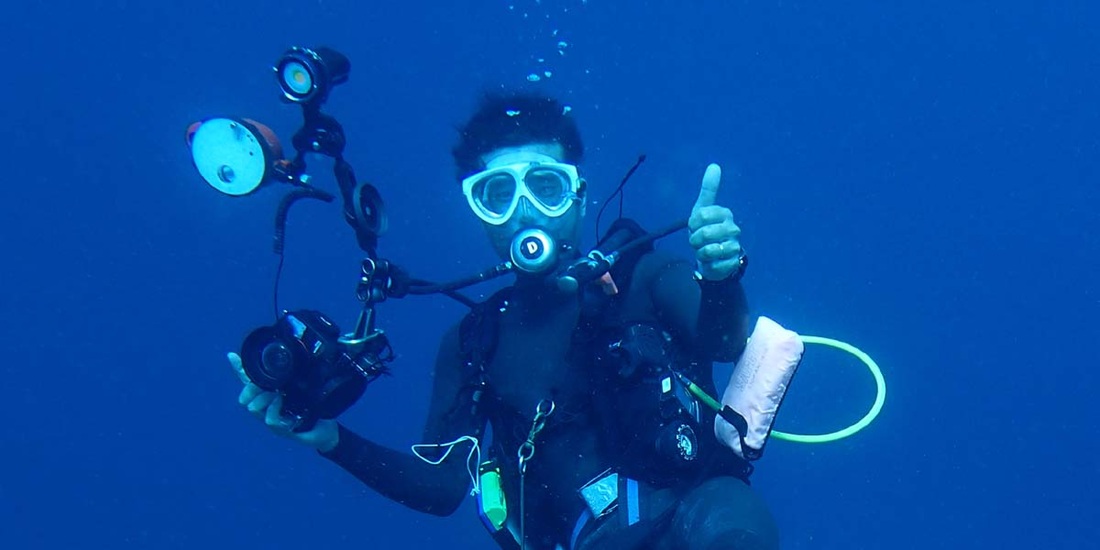Challenges
|
Underwater photography poses several challenges. For example do objects appear to be up to 33 % larger and 25 % closer to you than they really are. So the big fish you photographed may become a miniature on the picture.
The only solution is to get closer to the fish, which is easier said than done, because if you get too close, you will scare the fish away. My advise is to approach the fish slowly. Even better will it be to stop and wait until the fish comes to you. I have got some good pictures when the other divers in my group have been watching Manta Rays. Some fish species are less likely to run away. For example are some Damselfishes so territorial that they will not run away unless you get very, very close. Other fishes, for example the Stonefish trust their camouflage so much that they will not move even if you touch them. Then there are fishes that do not consider divers to be a threat and just stay where they are, for example the Moray Eel. Finally do we have those who often neglect the presence of us, because they are so large, for example Whale Shark and Manta Ray. Colors disappear with depth. Red disappears at 5 meters. Further down will orange, yellow and then green disappear. Below 25 meters is everything blue. Our brain will compensate for the loss of colors underwater, and we think that we still can see red and orange colors even when they are not there. The camera cannot compensate for loss of colors, so the pictures will appear more blue than we remembered it. As colors disappear with depth, it becomes darker as well. Artificial light is therefore necessary when you are deeper than a couple of meters. The flash on a compact camera is useful up to 2-3 meters in a dark room. Underwater is the range less than a meter. For me is this as a challenge. The closer I get, the better the chance for good pictures. As I said earlier, the best pictures are taken when you are patient and let the fish come to you. The flash will also highlight a common problem: Any particles in the water will appear as white dots on the picture. It’s like taking pictures with flash when it is snowing. It can be removed with Photoshop, which can take considerable time. The best method is to invest in one or two two strobes. The further away the strobes are from the camera lens, the better. The strobes can be mounted on extension rods attached to the underwater house. This will eliminate the white dots and provide good lighting for photographs and video recording. Another good reason to be close to the fish is that the camera’s autofocus system needs something to focus on. A small object will be disregarded by the autofocus, and you will get a picture of a blurred fish with sharp corals in the background. You may also be amazed by how quick a fish can move. A lot can happen from the moment you press the shutter button until the picture is taken. Finally, to get a good picture of a fish, you should photograph it from it’s side or front and not from above or behind. This is easiest done on a sloping reef. When snorkeling in shallow water do I often hold the camera below me and hope that I tilt it with the right angle when I press the shutter button. |
|
